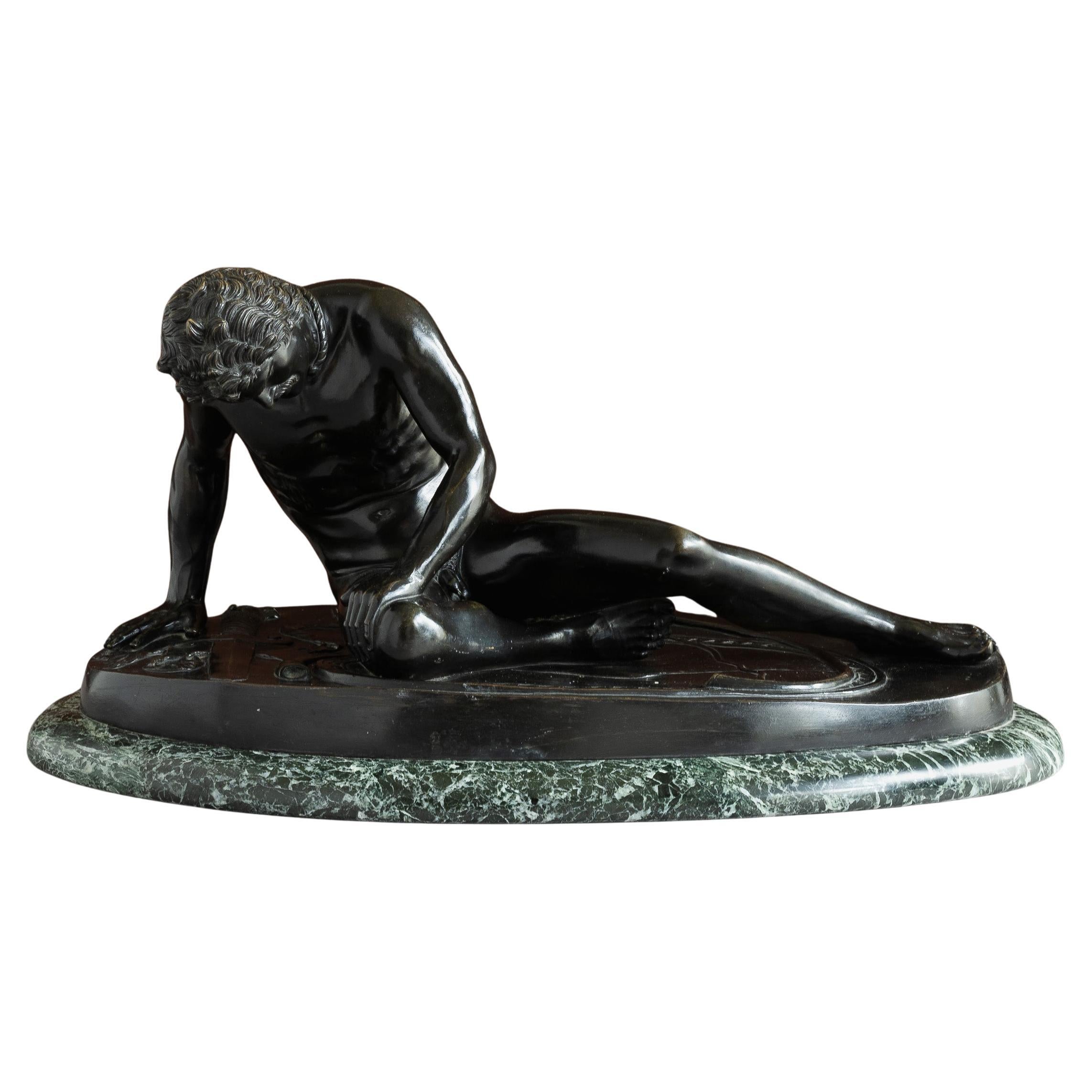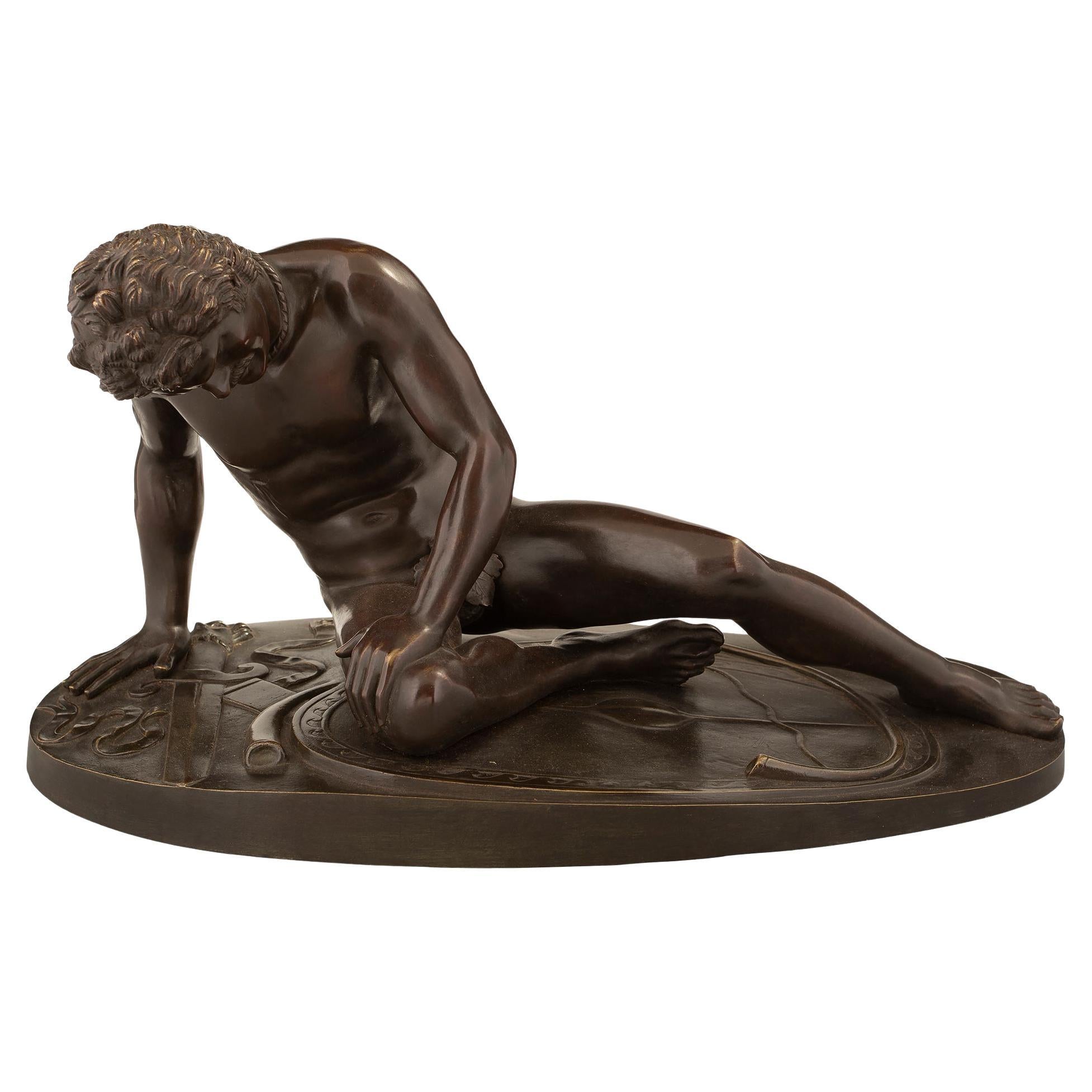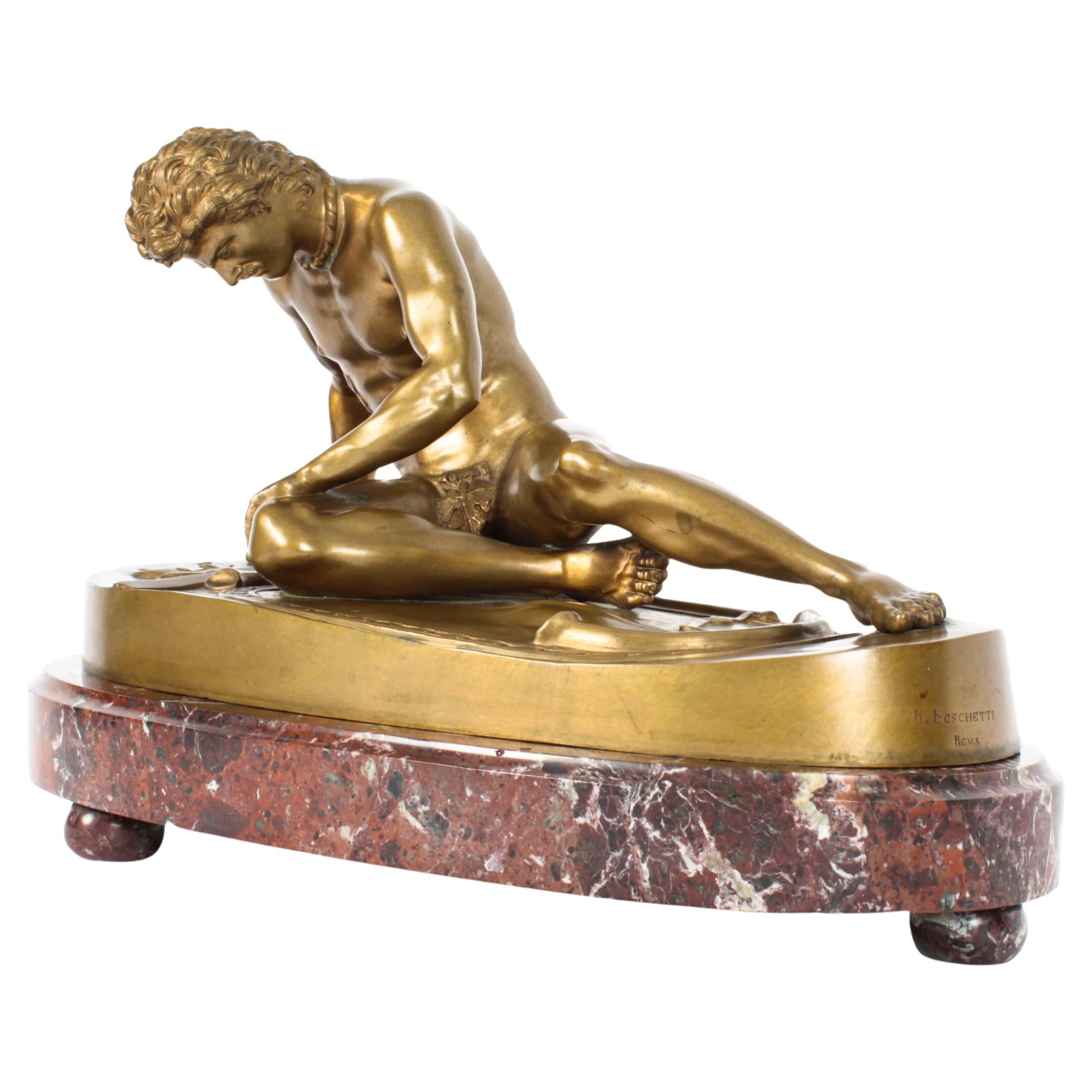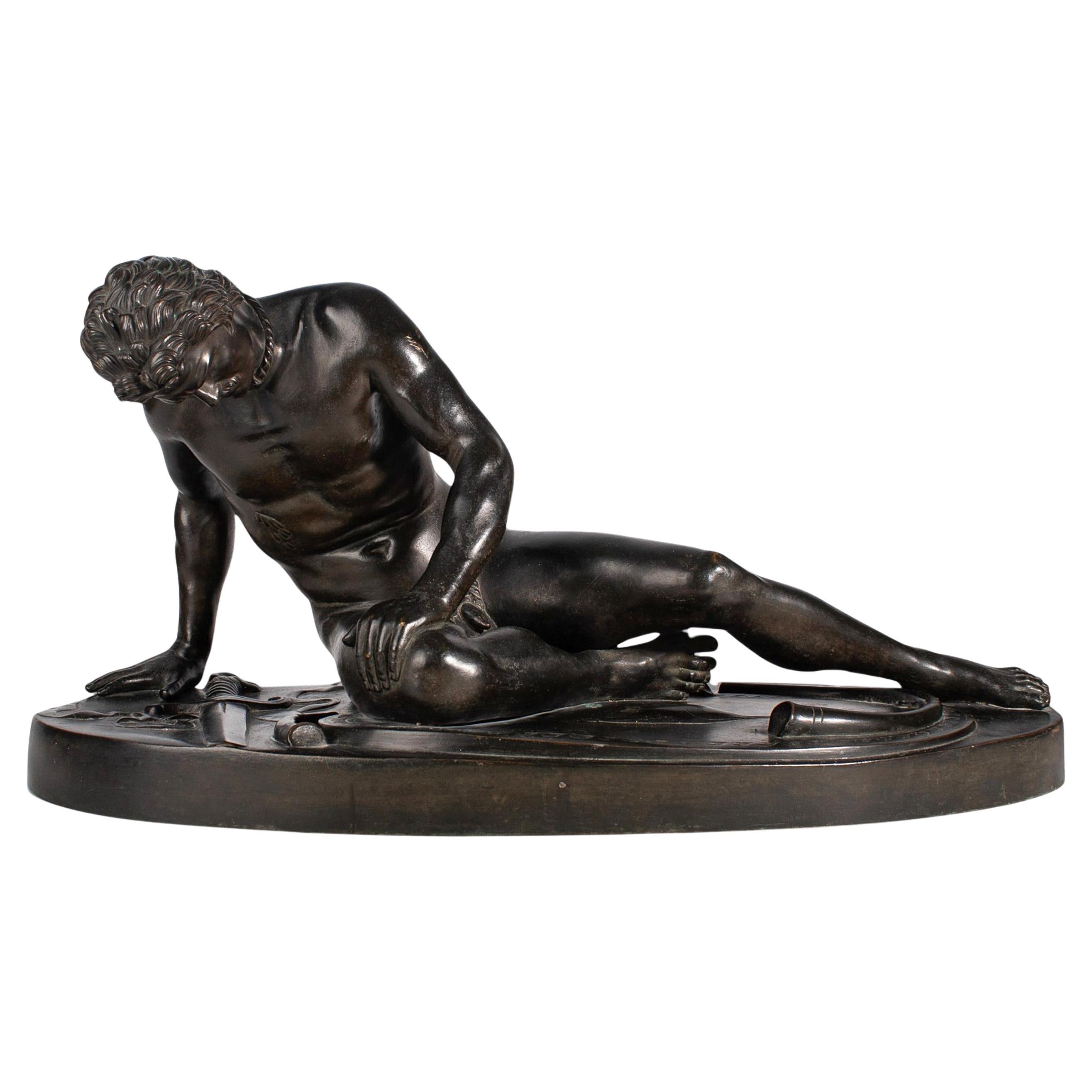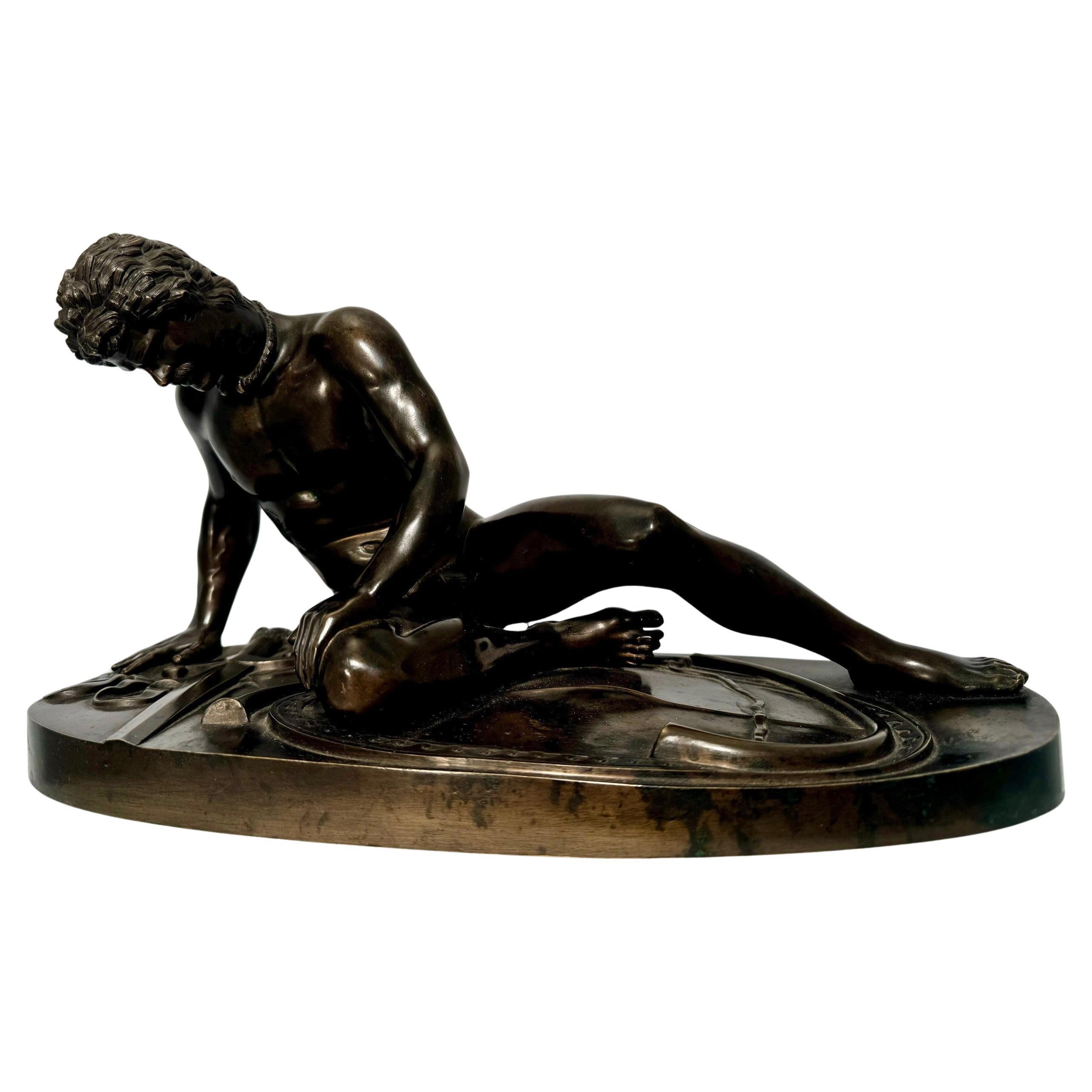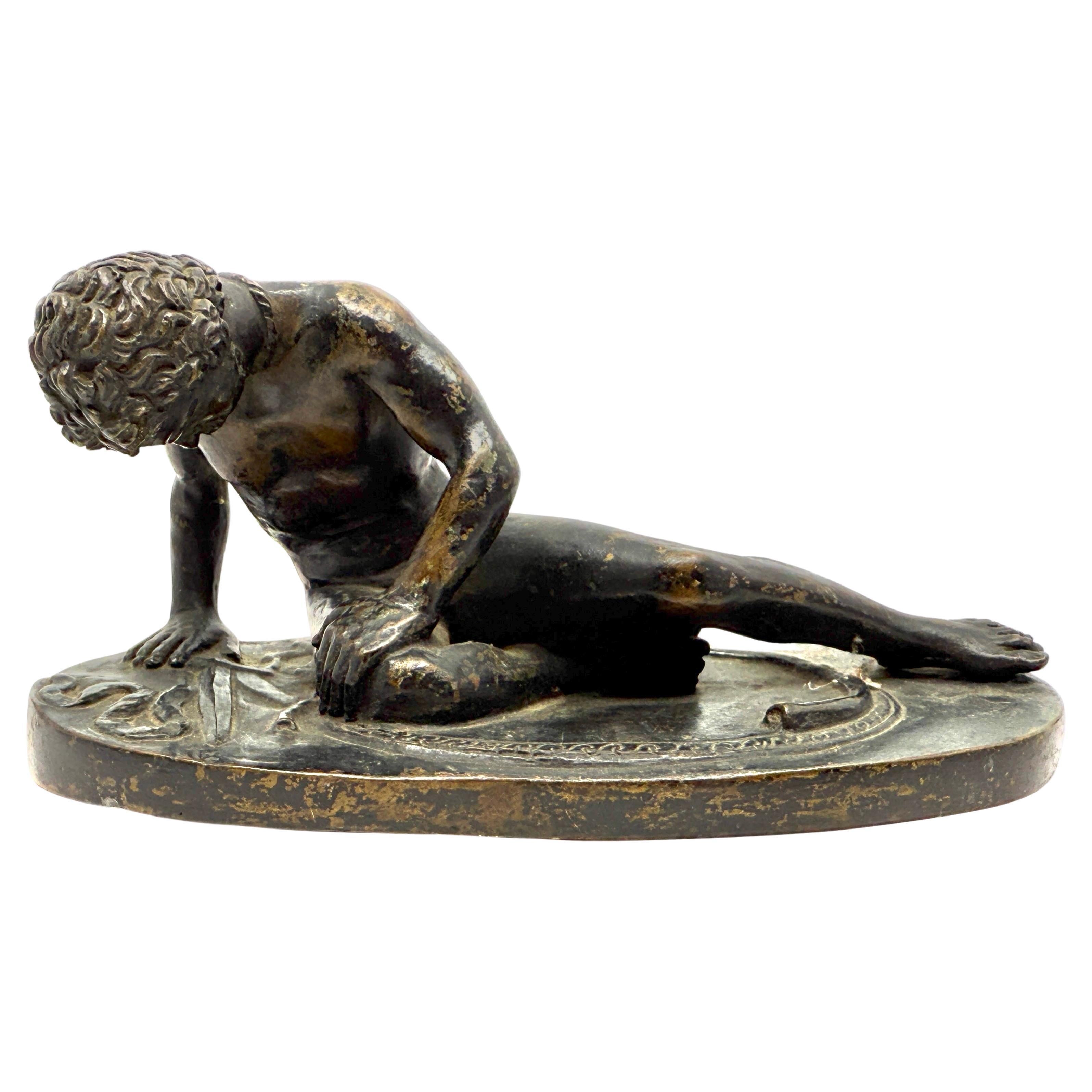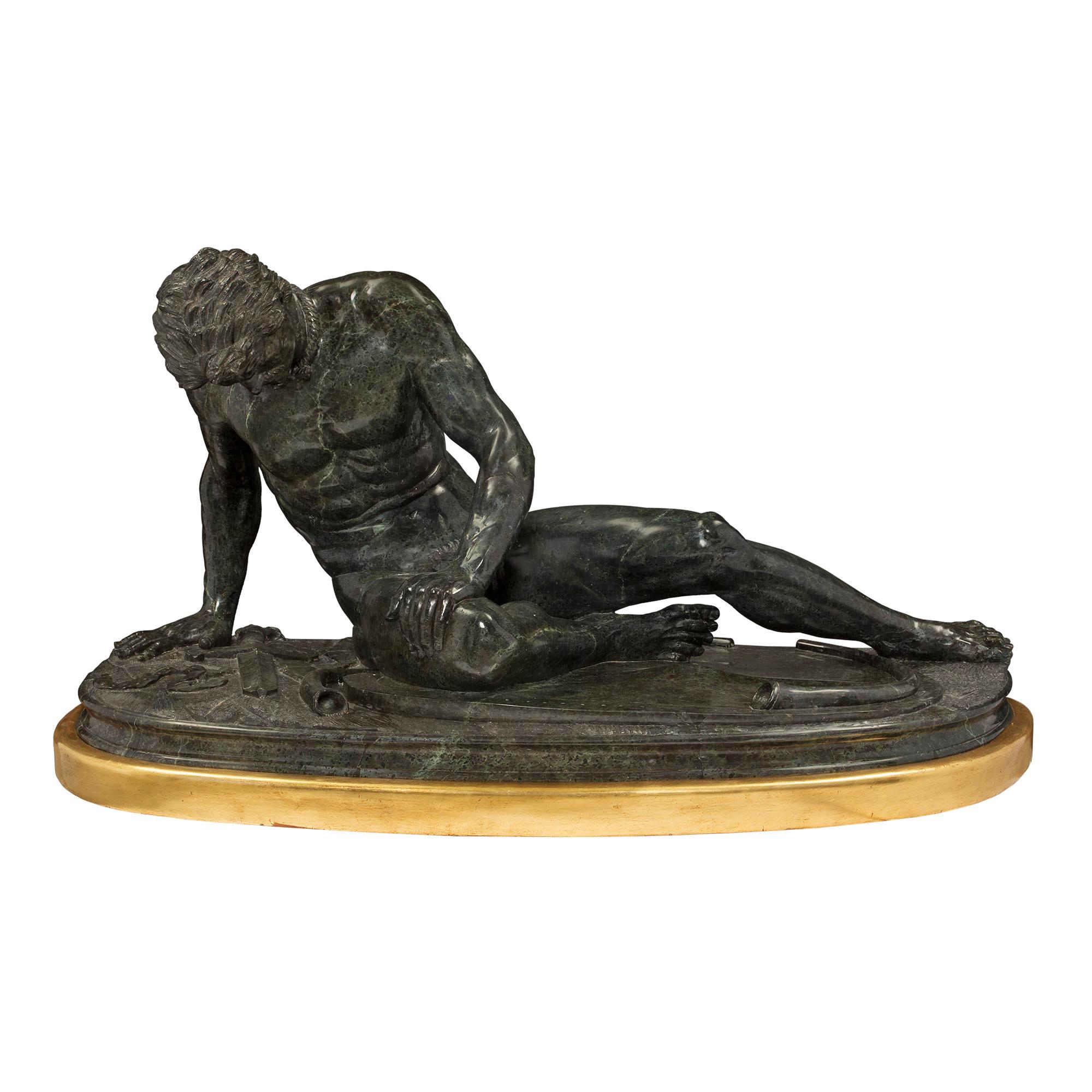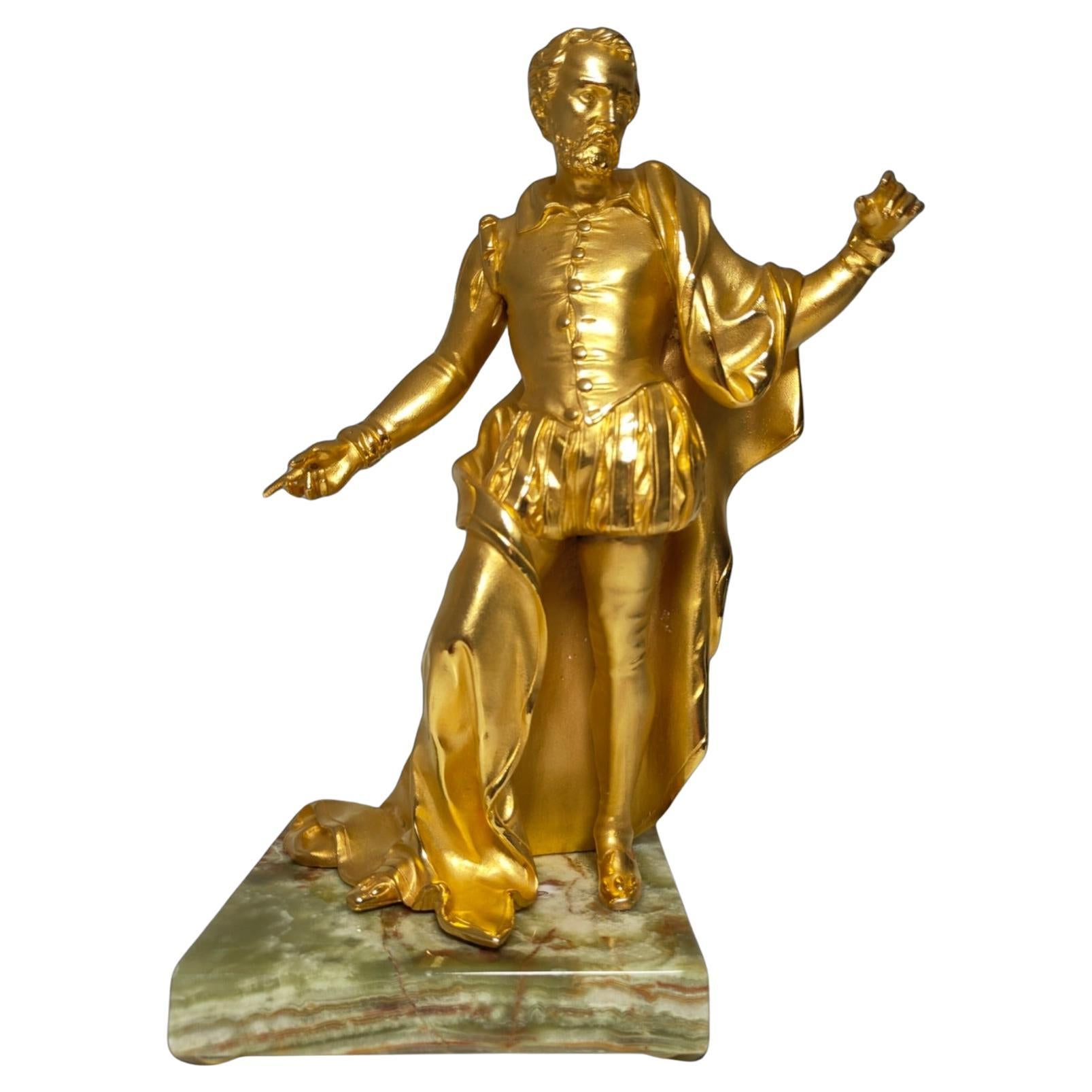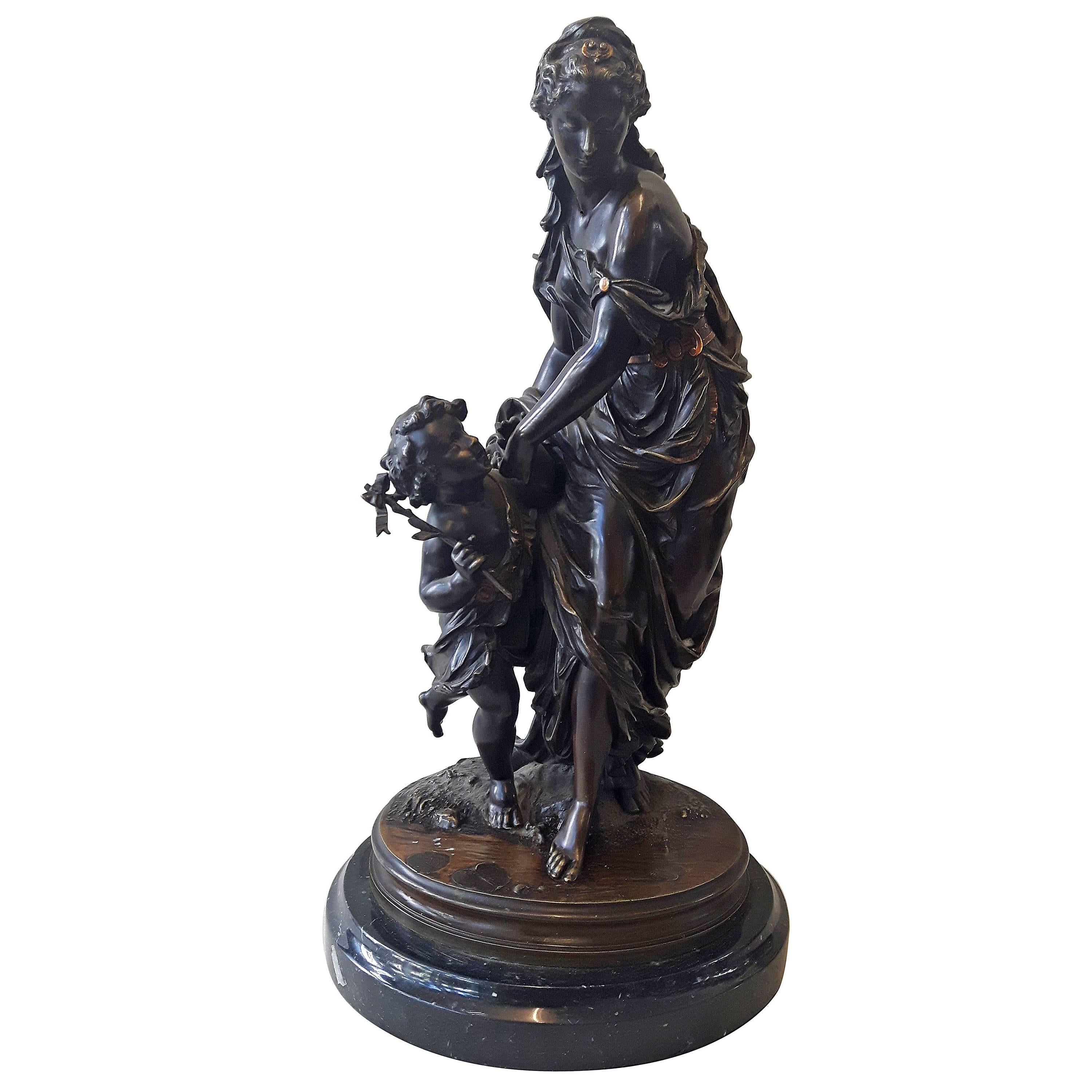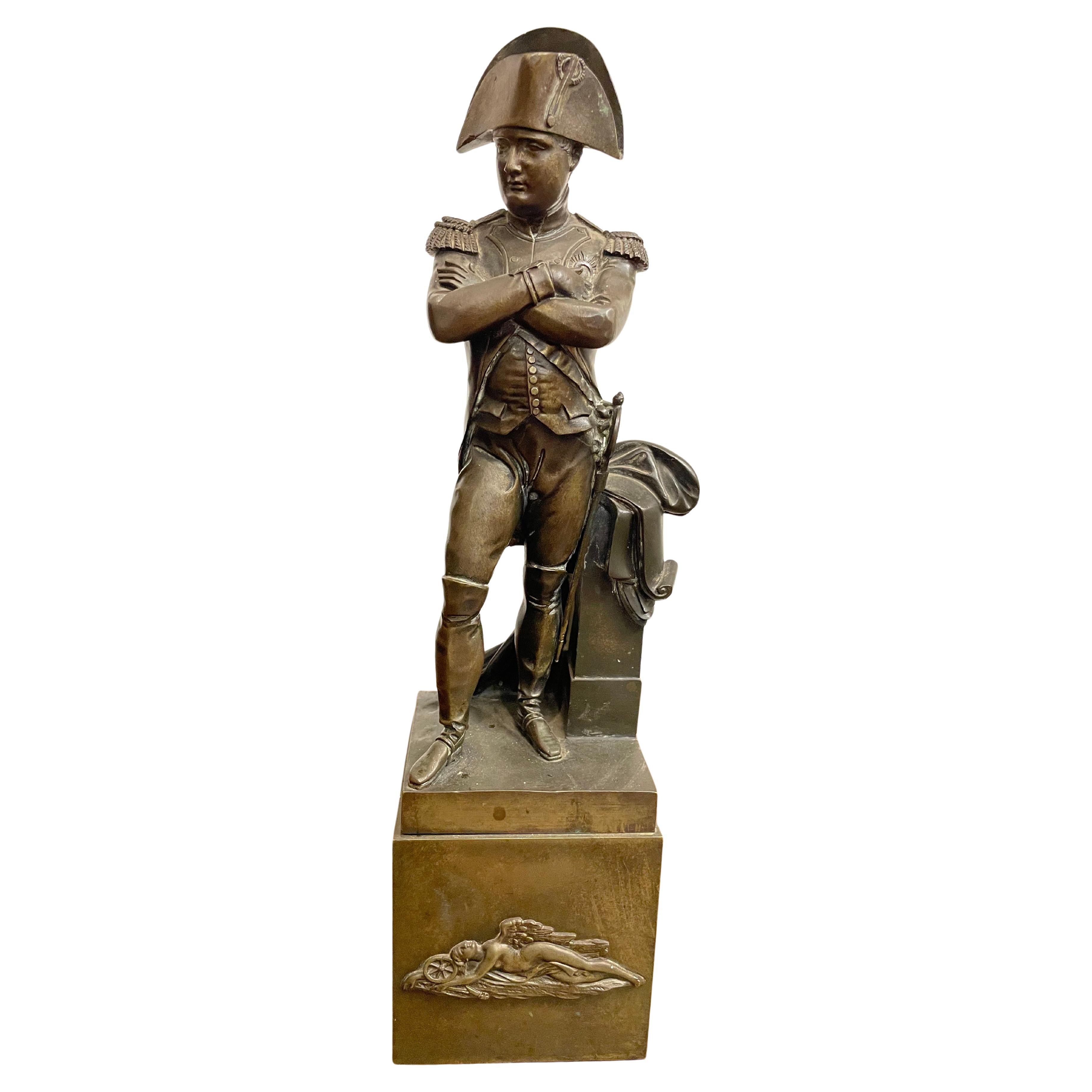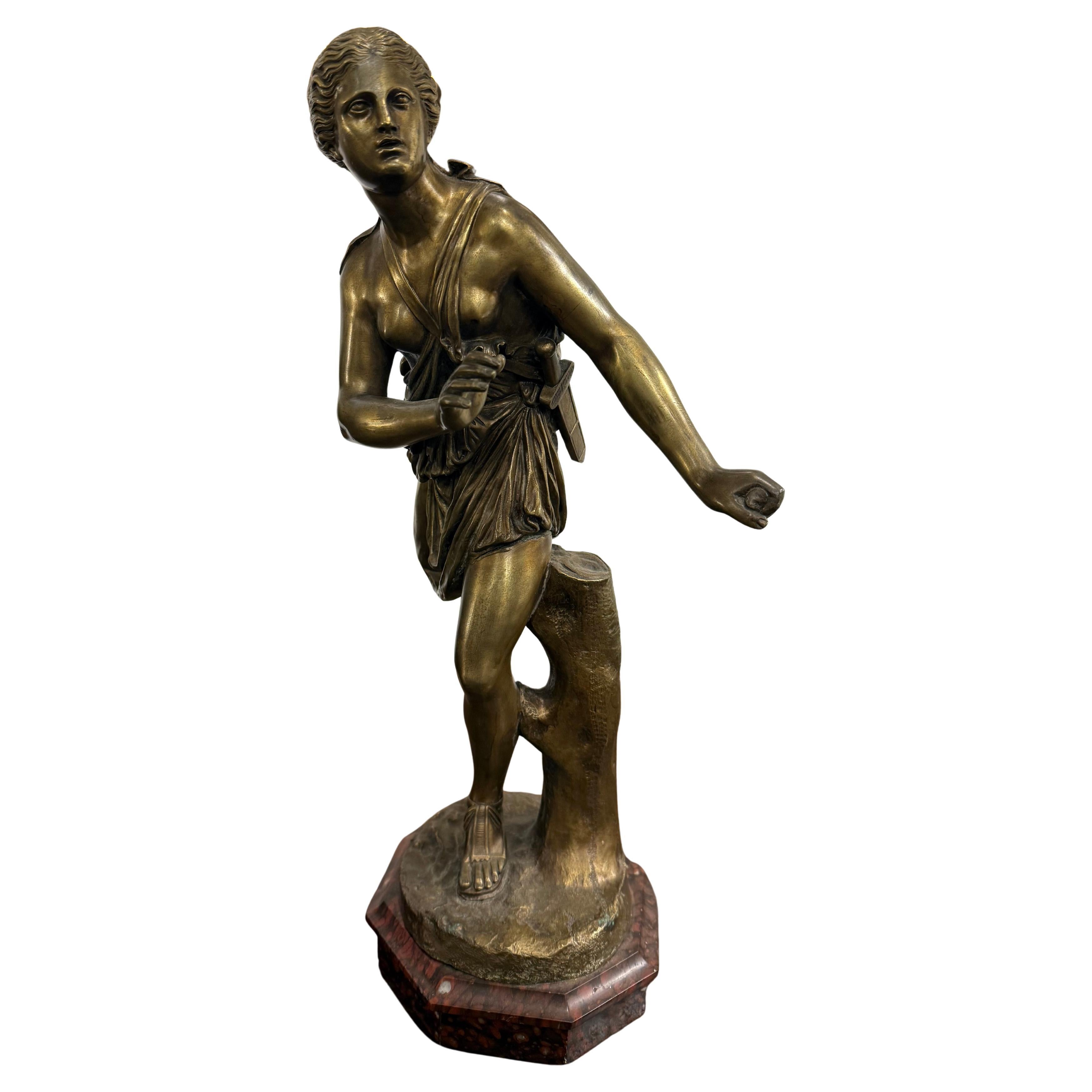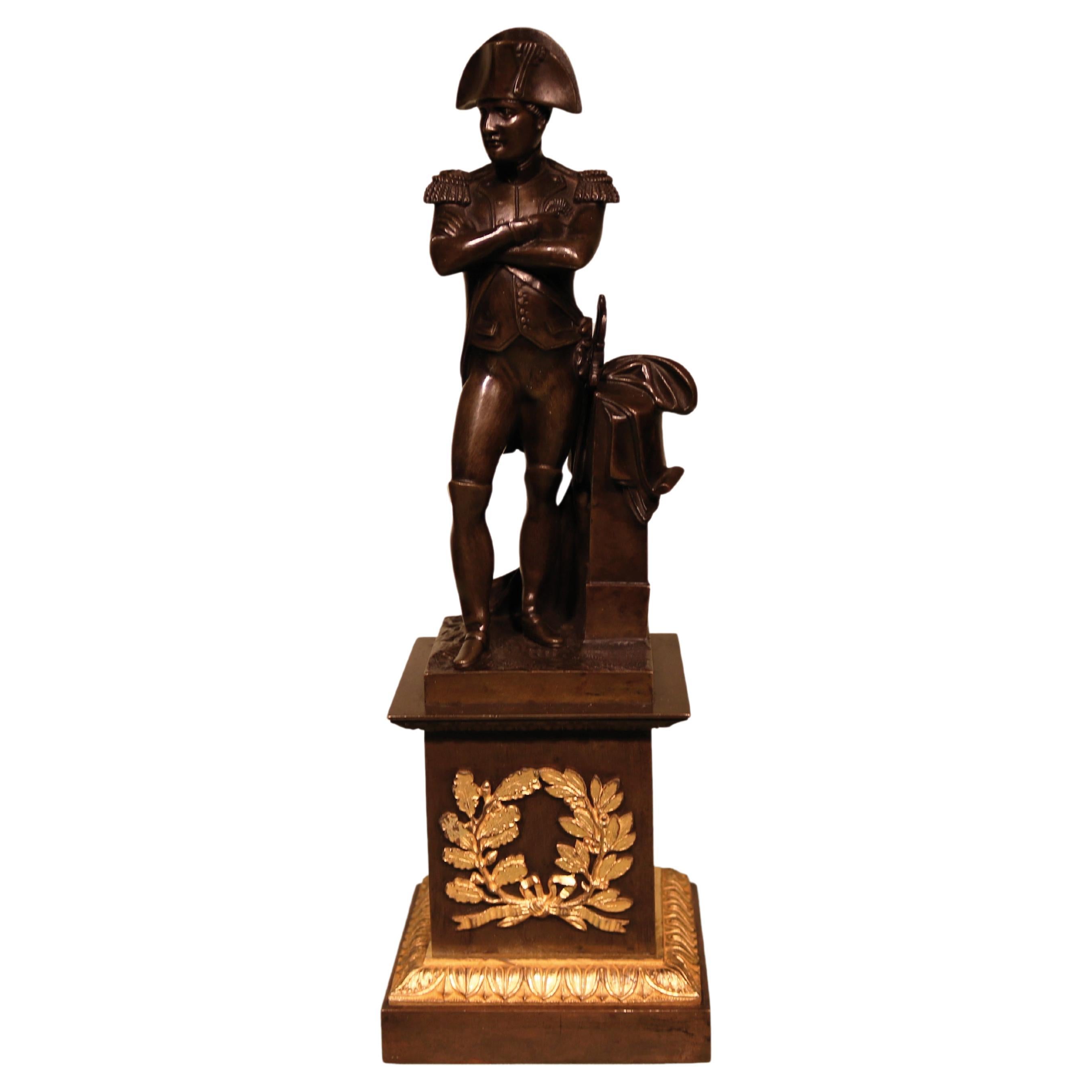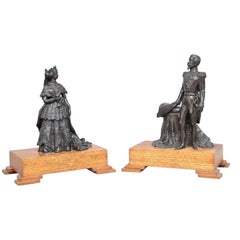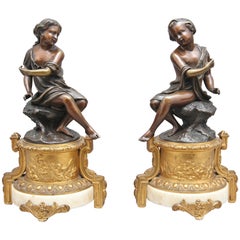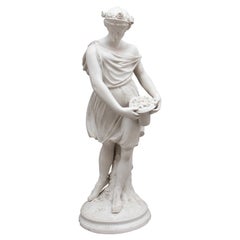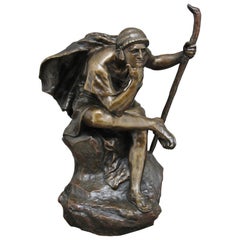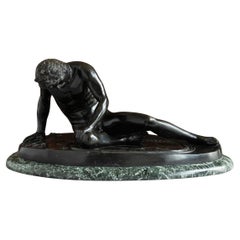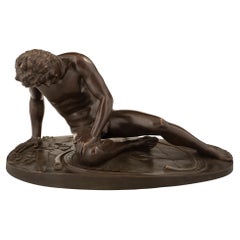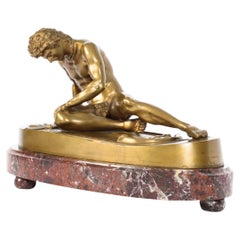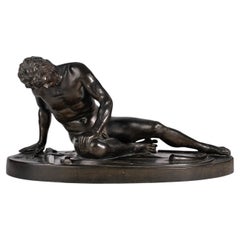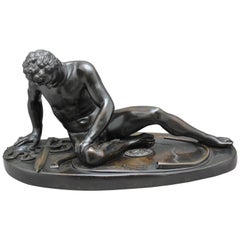
19th Century Bronze Figure of "The Dying Gaul"
View Similar Items
Want more images or videos?
Request additional images or videos from the seller
1 of 16
19th Century Bronze Figure of "The Dying Gaul"
$5,876.68List Price
About the Item
- Dimensions:Height: 13 in (33.02 cm)Width: 26 in (66.04 cm)Depth: 11 in (27.94 cm)
- Materials and Techniques:
- Place of Origin:
- Period:
- Date of Manufacture:1870
- Condition:Wear consistent with age and use.
- Seller Location:Martlesham, GB
- Reference Number:Seller: 26561stDibs: LU3083315751012
About the Seller
4.9
Platinum Seller
Premium sellers with a 4.7+ rating and 24-hour response times
Established in 1984
1stDibs seller since 2017
211 sales on 1stDibs
Associations
LAPADA - The Association of Arts & Antiques Dealers
Authenticity Guarantee
In the unlikely event there’s an issue with an item’s authenticity, contact us within 1 year for a full refund. DetailsMoney-Back Guarantee
If your item is not as described, is damaged in transit, or does not arrive, contact us within 7 days for a full refund. Details24-Hour Cancellation
You have a 24-hour grace period in which to reconsider your purchase, with no questions asked.Vetted Professional Sellers
Our world-class sellers must adhere to strict standards for service and quality, maintaining the integrity of our listings.Price-Match Guarantee
If you find that a seller listed the same item for a lower price elsewhere, we’ll match it.Trusted Global Delivery
Our best-in-class carrier network provides specialized shipping options worldwide, including custom delivery.More From This Seller
View AllPair of 19th Century French Bronzes
Located in Martlesham, GB
A pair of French 19th century bronzes of Napoleon the third (1808–1873) the last of emperor of France (1852–1870) and his consort the empress Eugenie. The bronzes were most probably ...
Category
Antique 1850s French Figurative Sculptures
Materials
Bronze
$4,633 / set
Pair of 19th Century French Bronzes
Located in Martlesham, GB
A pair of 19th century French bronze figures of a boy and girl, each figure seated and dressed in robes, supported on finely cast gilt bronze cylindrical plinths...
Category
Antique 1860s French Figurative Sculptures
Materials
Bronze
$3,387 / set
19th Century Parian Figure of a Flower Maiden
Located in Martlesham, GB
19th century parian figure of a flower maiden, the lady holding a basket of flowers and leaning on a floral log, wonderful detail all around. The base has some damage in a few places...
Category
Antique 1850s British Early Victorian Figurative Sculptures
Materials
Ceramic
Large 19th Century Bronze of Oedipus Meditating
Located in Martlesham, GB
A large 19th century bronze of “Oedipus meditating” by the French sculpture Henri Daniel Contenot, the cloaked figure sitting on a rock surface, cross legged with a stick in hand meditating. On the rock surface there is the foundry mark which reads “Syndicat Des Fabr Des Bronze Unis France...
Category
Antique 1880s French Figurative Sculptures
Materials
Bronze
Pair of Early 19th Century Bronze Urns
Located in Martlesham, GB
A pair of French early 19th century bronze urns on marble bases, the bronze engraved urns having wonderful intricate detail including rams head handles at either side of each urn, sitting on square column marble bases decorated with a coat of arms, terminating on a marble plinth base...
Category
Antique 1820s French Abstract Sculptures
Materials
Marble, Bronze
$3,387 / set
19th Century Bronze of Napoleon on Horseback
Located in Martlesham, GB
A lovely quality 19th century French bronze of Napoleon on horseback standing on a moulded bronze plinth terminating on a dark grey variegated ma...
Category
Antique 1880s French Figurative Sculptures
Materials
Bronze
You May Also Like
Antique Bronze Figure of The Dying Gaul
Located in London, GB
A bronze figure of the dying Gaul after the Antique, on verde marble base, Italian, nineteenth century.
Dimensions: 30.5cm (12") High, 35cm (13¾") Wide, 65cm (25½") Long, 13.5cm (5¼...
Category
Antique 19th Century Italian Classical Greek Figurative Sculptures
Materials
Marble, Bronze
Italian 19th Century Patinated Statue of ‘The Dying Gaul’
Located in West Palm Beach, FL
A handsome Italian 19th century patinated statue of 'The Dying Gaul'. The statue is raised by an oval shaped terrain like designed base. The fallen gladiato...
Category
Antique 19th Century Italian Figurative Sculptures
Materials
Bronze
Antique Bronze Sculpture of the Dying Gaul by B Boschetti Rome, 19th Century
By Benedetto Boschetti
Located in London, GB
This is a truly magnificent antique Italian Grand Tour figural golden patinated bronze sculpture depicting a wounded gladiator known as "The Dying Gaul", and signed B Boschetti...
Category
Antique 1830s Italian Figurative Sculptures
Materials
Bronze
Mid-19th Century Grand Tour Bronze Figurative Sculpture 'The Dying Gaul', Italy
Located in North Miami, FL
Mid-19th Century Grand Tour Bronze Figurative Sculpture 'The Dying Gaul', Italy
By: unknown
Material: bronze, copper, metal
Technique: cast, molded, polished, metalwork, patinated
D...
Category
Antique 1850s Italian Grand Tour Figurative Sculptures
Materials
Metal, Bronze, Copper
Grand Tour bronze figure of “The Dying Gaul”, After The Antique
Located in Montreal, QC
A late 19th century Grand Tour bronze figure of “The Dying Gaul”, after the antique. The Dying Gaul depicts a warrior in his final moments, next to his shield and sword, his face contorted in pain just before he collapses from the mortal wound to his chest The original marble figure, which is in the Capitoline museum in Rome is thought to be a Roman copy of a Greek sculpture in Bronze. As an image of a vanquished enemy, the sculpture embodies courage in defeat, self-possession in the face of death, and the recognition of nobility in an alien race.
“The Dying Gaul” was found in Rome with another ancient marble...
Category
Antique Late 19th Century Italian Classical Greek Figurative Sculptures
Materials
Bronze
Grand Tour Neoclassical Bronze of “The Dying Gaul”
Located in Palm Springs, CA
A nice little bronze Grand Tour souvenir bronze of the Dying Gaul a famous sculpture of antiquity preserved in Rome. This bronze has nice detail. The patina is worn in some places and it is in estate found condition. We haven’t tried to clean or polish it.
Some patina loss minor nicks and surfaces scratches, please see the detailed photos.
For this interested this from Wikipedia about the original sculpture:
The Dying Gaul, also called The Dying Galatian[2] (Italian: Galata Morente) or The Dying Gladiator, is an ancient Roman marble semi-recumbent statue now in the Capitoline Museums in Rome. It is a copy of a now lost Greek sculpture from the Hellenistic period (323–31 BC) thought to have been made in bronze.[3] The original may have been commissioned at some time between 230 and 220 BC by Attalus I of Pergamon to celebrate his victory over the Galatians, the Celtic or Gaulish people of parts of Anatolia. The original sculptor is believed to have been Epigonus, a court sculptor of the Attalid dynasty of Pergamon.
Until the 20th century, the marble statue was usually known as The Dying Gladiator, on the assumption that it depicted a wounded gladiator in a Roman amphitheatre.[4] However, in the mid-19th century it was re-identified as a Gaul or Galatian and the present name "Dying Gaul" gradually achieved popular acceptance. The identification as a "barbarian" was evidenced for the figure's neck torc, thick hair and moustache, weapons and shield carved on the floor, and a type of Gallic carnyx between his legs.[5]
Description
The white marble statue, which may originally have been painted, depicts a wounded, slumped Gaulish or Galatian Celt, shown with remarkable realism and pathos, particularly as regards the face. A bleeding sword puncture is visible in his lower right chest. The warrior is represented with characteristic Celtic hairstyle and moustache with a Celtic torc...
Category
Early 20th Century Italian Figurative Sculptures
Materials
Bronze
Recently Viewed
View AllMore Ways To Browse
Roman Gladiator
Bronze Gladiator
Dying Gaul Sculpture
Dying Gaul
The Dying Gaul
Dior Gladiator
Bronze Dying Gaul
The Galatian Bronze Sculpture
Articulated Hand
Mythical Creatures
Wood Carved Man
Antique Classical Bronze
Egyptian Bronze
Art Deco Bronze On Marble
Collection Reproductions
Gold Horn
Greek Goddess
Museum Display Stand
